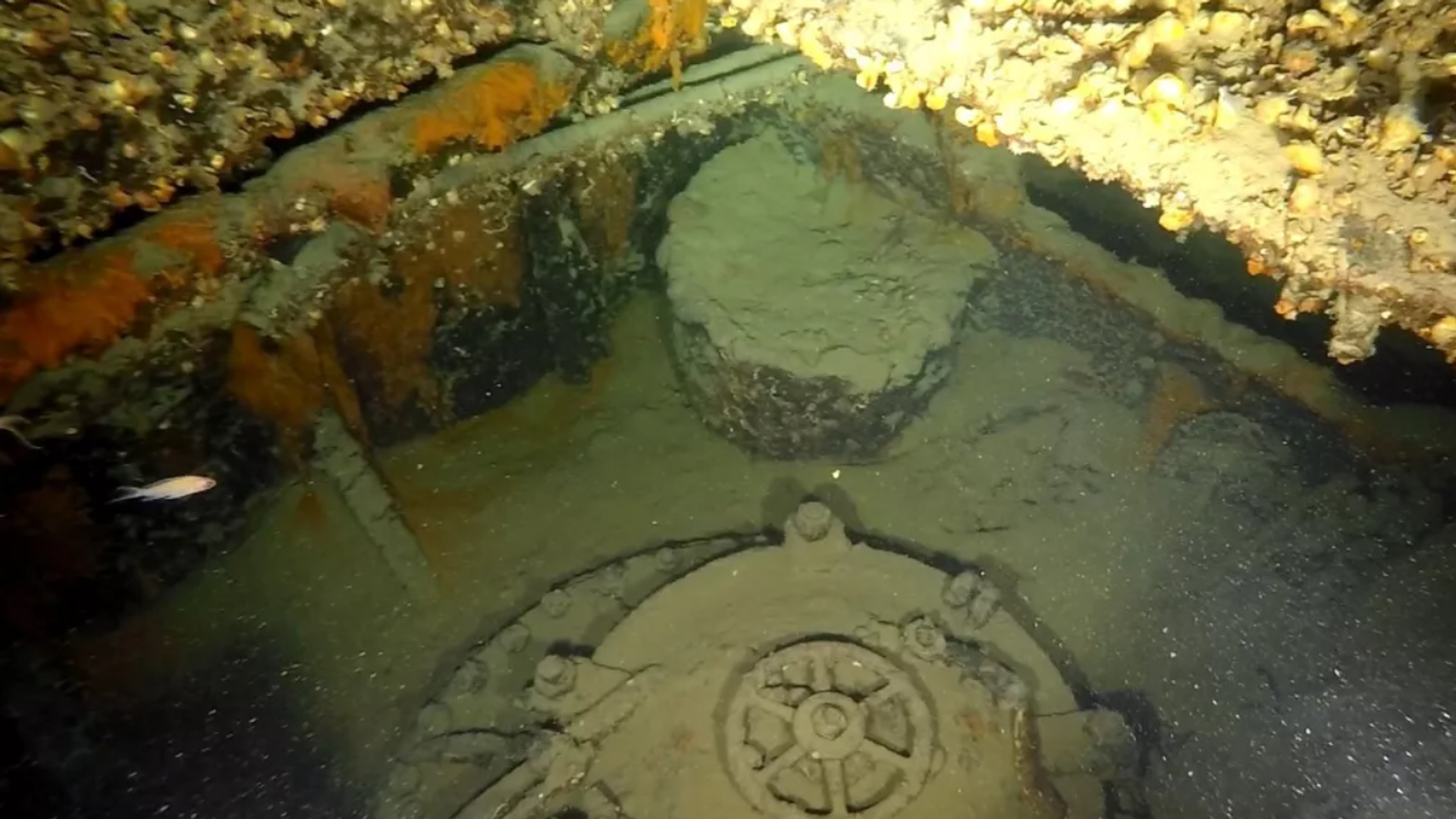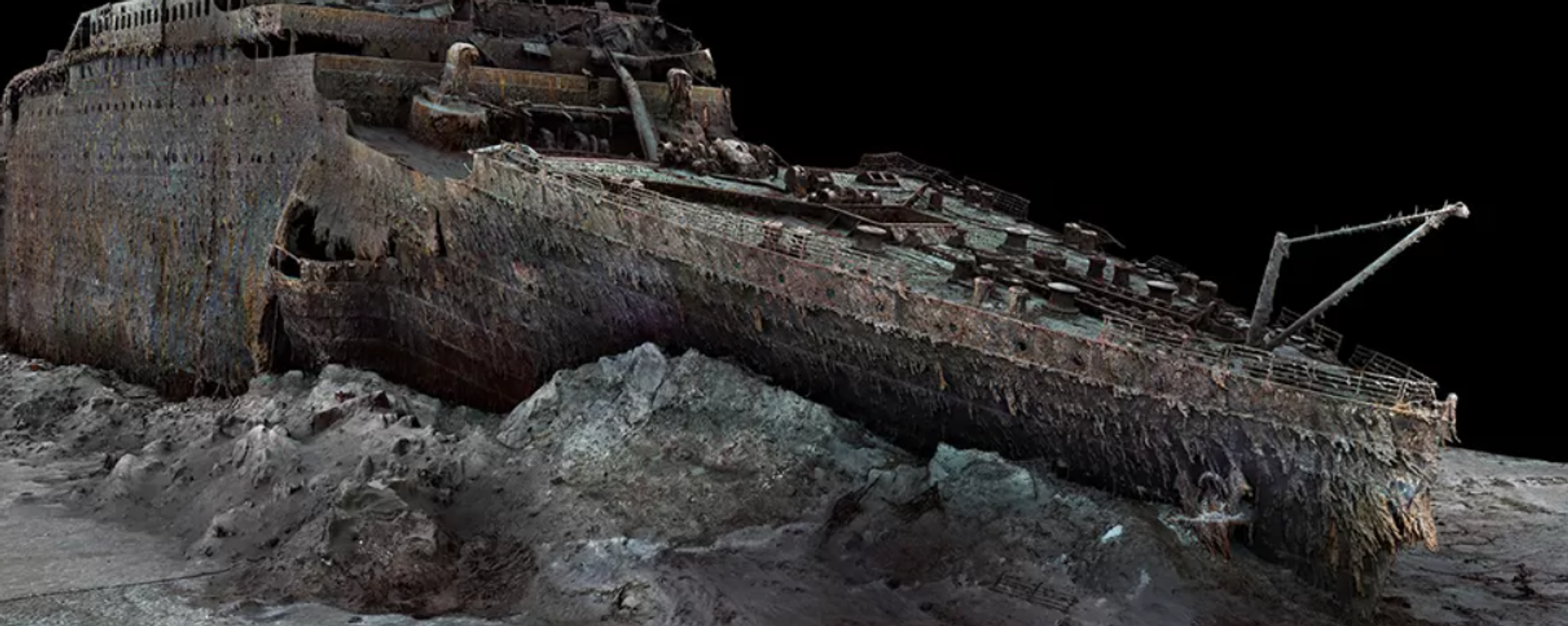https://sputnikglobe.com/20230614/video-british-wwii-submarine-hms-triumph-found-off-greek-coast-1111164503.html
Video: British WWII Submarine HMS Triumph Found off Greek Coast
Video: British WWII Submarine HMS Triumph Found off Greek Coast
Sputnik International
The wreck of HMS Triumph, a British World War II submarine that played a significant role in special military operations, has been discovered off the coast of Greece.
2023-06-14T22:12+0000
2023-06-14T22:12+0000
2023-06-20T09:36+0000
beyond politics
science & tech
royal navy
greece
submarine
maritime
wwii
aegean sea
https://cdn1.img.sputnikglobe.com/img/07e7/06/0e/1111164345_10:0:1265:706_1920x0_80_0_0_96ea1d2b736d12263e6b75b177cf1768.png
The wreck of HMS Triumph, a British World War II submarine that played a significant role in special military operations, has been discovered off the coast of Greece.Kostas Thoctarides, a veteran Greek diver, announced the finding in a recent post on his social media account. The wreck was located in the Aegean Sea, approximately ten kilometers off Cape Sounion, at a depth of 666 feet (203 meters).According to Thoctarides, the closed hatches and retracted periscope clarify that the submarine was diving when it sank. The fore section of the wreck suffered severe damage from an explosion, likely the cause of the submarine's sinking.It remains unclear whether the explosion was the result of an external factor such as a depth charge or naval mine, or if it was internal, possibly caused by one of the sub's own torpedoes.The team responsible for the discovery is collaborating with submarine and torpedo experts to gather more information and find answers regarding the sinking. Rena Giatropoulou Thoctarides, a member of the search team, stated the group was seeking to uncover the complexities of the Triumph's story, which is intertwined with the Greek resistance and the secret services operating during the Italian-German occupation.During World War II,the submarine played a vital role in rescuing Allied soldiers trapped in North Africa and in infiltrating British intelligence officers into Greece, which was then an enemy territory, to support the resistance movement.The search for the wreck of HMS Triumph lasted for more than two decades, with the team having previously located four other submarines, including HMS Perseus in 1997. However, finding the Triumph proved to be exceptionally challenging due to adverse weather conditions and strong underwater currents.The use of a remotely-operated underwater vehicle (ROV) was a key factor in their success, as it allowed exploration at a depth of 203 meters, where divers cannot operate safely.Timmy Gambin, a maritime archaeologist at the University of Malta, emphasized the significance of acknowledging the human stories associated with the thousands of ships lost during World War II.While not involved in the Triumph search, Gambin led the discovery of the wreck of HMS Urge, another British WWII submarine sunk off the coast of Malta. He stressed the importance of honoring not only the victims but also those left behind and their families.
https://sputnikglobe.com/20230517/video-researchers-create-first-3d-model-of-titanic-wreck-1110427119.html
greece
aegean sea
Sputnik International
feedback@sputniknews.com
+74956456601
MIA „Rossiya Segodnya“
2023
News
en_EN
Sputnik International
feedback@sputniknews.com
+74956456601
MIA „Rossiya Segodnya“
Sputnik International
feedback@sputniknews.com
+74956456601
MIA „Rossiya Segodnya“
hms triumph, kostas thoctarides, greece coast, ww2 maritime history, royal nay submarine, british ww2 fleet
hms triumph, kostas thoctarides, greece coast, ww2 maritime history, royal nay submarine, british ww2 fleet
Video: British WWII Submarine HMS Triumph Found off Greek Coast
22:12 GMT 14.06.2023 (Updated: 09:36 GMT 20.06.2023) HMS Triumph, launched in 1938, completed over 20 missions during World War II, including attacks on Axis ships and submarines in the Mediterranean Sea. However, its most notable achievements came in the form of covert operations.
The wreck of HMS Triumph, a British World War II submarine that played a significant role in special military operations, has been discovered off the coast of Greece.
Kostas Thoctarides, a veteran Greek diver, announced the finding in a recent post on his social media account. The wreck was located in the Aegean Sea, approximately ten kilometers off Cape Sounion, at a depth of 666 feet (203 meters).
According to Thoctarides, the closed hatches and retracted periscope clarify that the submarine was diving when it sank. The fore section of the wreck suffered severe damage from an explosion, likely the cause of the submarine's sinking.
It remains unclear whether the explosion was the result of an external factor such as a depth charge or naval mine, or if it was internal, possibly caused by one of the sub's own torpedoes.
The team responsible for the discovery is collaborating with submarine and torpedo experts to gather more information and find answers regarding the sinking. Rena Giatropoulou Thoctarides, a member of the search team, stated the group was seeking to uncover the complexities of the Triumph's story, which is intertwined with the Greek resistance and the secret services operating during the Italian-German occupation.
"My opinion is that all 64 heroes are in the submarine, as they were in a deep dive and all hatches are closed," Giatropoulou said. "HMS Triumph must be treated with the respect and sanctity it deserves as a maritime war grave."
During World War II,the submarine played a vital role in rescuing Allied soldiers trapped in North Africa and in infiltrating British intelligence officers into Greece, which was then an enemy territory, to support the resistance movement.
The search for the wreck of HMS Triumph lasted for more than two decades, with the team having previously located four other submarines, including HMS Perseus in 1997. However, finding the Triumph proved to be exceptionally challenging due to adverse weather conditions and strong underwater currents.
The use of a remotely-operated underwater vehicle (ROV) was a key factor in their success, as it allowed exploration at a depth of 203 meters, where divers cannot operate safely.
Naval records indicate Triumph clandestinely sailed into Despotikos Bay near Antiparos Island in the Cyclades in December 1941. On December 30, the submarine transmitted an encrypted message confirming the delivery of a British military intelligence team.
The Triumph was scheduled to rescue over 30 British escapees from Antiparos on January 9. However, the submarine never arrived, and the escapees were subsequently captured.
On January 23, 1942, the Royal Navy declared the submarine missing at sea, with all 64 crew members presumed lost.
Timmy Gambin, a maritime archaeologist at the University of Malta, emphasized the significance of acknowledging the human stories associated with the thousands of ships lost during World War II.
While not involved in the Triumph search, Gambin led the discovery of the wreck of HMS Urge, another British WWII submarine sunk off the coast of Malta. He stressed the importance of honoring not only the victims but also those left behind and their families.



